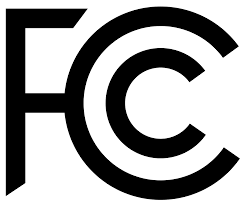
The United States Coast Guard (USCG) recently issued an alert regarding the potential for Electro Magnetic Interference (EMI) between some LED lighting products and vital communication devices like VHF radios and Automatic Identification Systems (AIS). EMI occurs when an electromagnetic wave emits from an electronic circuit in one device at a frequency that conflicts with the communication frequency used by another device. VHF and AIS operate between 156 MHz and 165 MHz, so any other nearby device emitting in that frequency range may cause EMI.

It is important to note that all LED lights are an active electronic circuit, and all electronic circuits radiate electro-magnetic emissions to some degree. To ensure LED lights on a vessel do not interfere with communication devices, there are a few things to consider.
Certifications
First and foremost, always check that the LED product is approved by the Federal Communications Commission (FCC). The FCC regulates all electronics sold in the United States as to the allowable frequency ranges and levels of electro-magnetic emissions. For a long time, LED lights were not on the list of active electronic devices that the FCC regulates, but were added in 2015. Therefore if older LED fixtures are onboard, there is a possibility that they do not meet the current standards.
The easiest way to identify products that are FCC approved is by looking for the FCC logo, pictured below, stamped somewhere on the product or packaging. If it is not obviously apparent, check with the manufacturer to verify the FCC approval. Other governing bodies aside from the FCC also have regulations and certify products to a certain standard. Most commonly used in the United States are Underwriters Laboratories (UL) and USCG certifications.

Installation
Even if an LED product meets all the requirements, and has all the necessary certifications, there is still a possibility for interference with VHF and AIS systems. This issue can most easily be avoided by installing both the LED fixtures and VHF and AIS antennae properly. If a powerful LED is installed too close to a VHF antenna, it can cause interference with the radio waves necessary to communicate.
Because required separation distances vary greatly depending on the power of the LED fixture, the antenna or the radio communication device, be sure to consult the installation manual for the manufacturer’s recommendation on spacing of products.
Similarly, if improper wire type or gauge is used, or the wires aren’t properly separated during installation, there can be EMI with a VHF or AIS system if those wires run too close to antennae or signal cable, like a VHF coaxial cable.
In the United States, the American Boat and Yacht Council (ABYC) recommends the proper wire gauge for installing electronic circuits on a recreational vessel. Always be sure to meet or exceed these standards, or have an ABYC-certified marine electrician perform the installation. It is also important to test the VHF and AIS systems that are installed in the proximity of LED lights to verify proper operational performance. For commercial vessels, the wiring must be up to the standard and regulations of the USCG.
Quality Products
The main determining factor in the level electro-magnetic signals emitted by an LED fixture is the quality of the materials used by the manufacturer. For example, a light fixture with a thin plastic housing is more likely to cause EMI than a fixture that uses a robust metal housing for the LEDs. Thus, it is generally better to purchase lights from a reputable manufacturer of LED lighting specifically for marine use, than to find a low-cost alternative that may not be manufactured with consideration for EMI with VHF and AIS systems.
Related Products:
-
DHR60 Masthead White LED, Base-Mount, Black, 24V (11.7W), 5NM, IP66, 225°
-
DHR60 Starboard Green LED, Base-Mount, Black, 24V (4.2W), 2NM, IP66, 112.5°
-
"Bullet" G4 LED Bulb, Warm White, 10-30VDC "Bullet" LED Replacement Bulb Omni-Directional
-
"X-Beam" Dual Color LED Replacement Bulb Blue/Cool White, 10-30VDC (1.6W), G4 Socket